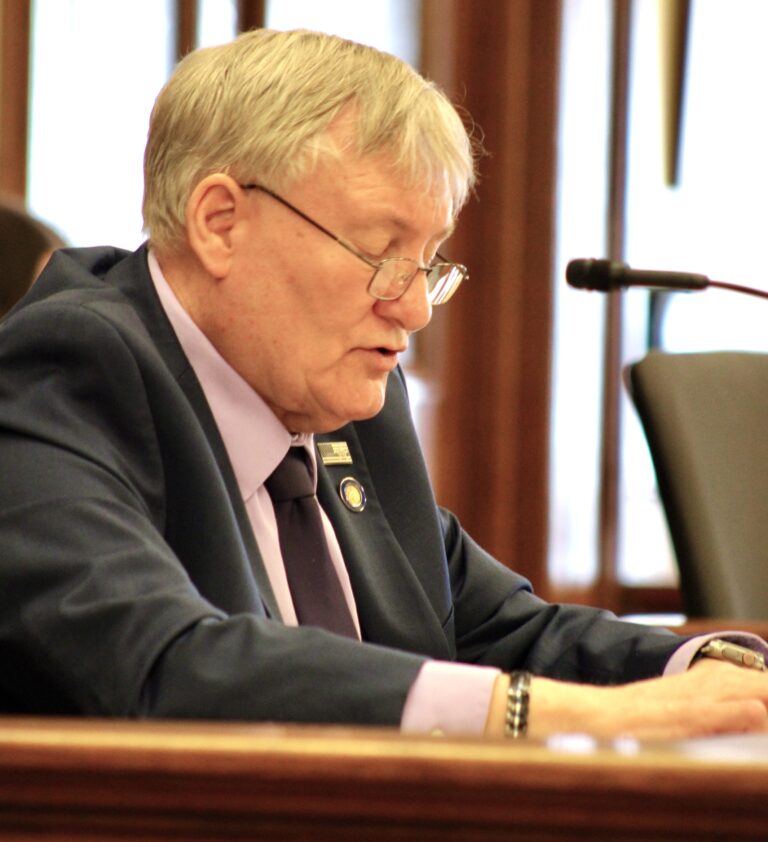The Capitol Report, produced by WisPolitics.com — a nonpartisan, Madison-based news service that specializes in coverage of government and politics — provides a weekly analysis of issues being debated in Wisconsin state government. It is underwritten by the WNA and produced exclusively for its members. WisPolitics.com President Jeff Mayers is a former editor and reporter for the Associated Press and a former political writer for the Wisconsin State Journal.
EDITOR’S NOTE: This column is provided to Wisconsin Newspaper Association members by WisPolitics.com. Proper attribution in your newspapers IS REQUIRED, including the byline “WisPolitics.com” and the tagline at the end of the column.
Speaker Robin Vos has brought in the National Conference of State Legislatures to survey Wisconsin State Assembly staffers about their job duties and pay amid bipartisan concerns over recruiting and retaining aides to state representatives.
Vos, R-Rochester and president emeritus of the group, OK’d the project at a cost of $114,256. Oshkosh Democrat Gordon Hintz, who has now left his post as minority leader, expressed his support for the endeavor.
It appears to be the first study of its kind with the Legislature’s human resources office saying it couldn’t find any similar
comprehensive studies on pay for Assembly aides. The HR office also doesn’t track staff turnover.
Vos said in late December the Senate has been “very good at stealing a lot of our staffers” and that both Gov. Tony Evers and former Gov. Scott Walker pulled Assembly aides into their administrations.
He added that the Legislature faces the same pressures as other employers in a tight labor market.
The state’s unemployment rate in November dropped to 3%, tying the record low set in November 2018, while the state’s labor participation rate was 66.4%, among the tops in the country.
“The state government has to be competitive as best they can be with the private sector,” Vos said this month. “It doesn’t mean we’re going to offer higher pay (than the private sector), but it has to be competitive.”
There are significant pay disparities for Assembly aides vs. Senate staffers in the established job classifications. Still, no one WisPolitics.com interviewed was sure how the disparity developed because the pay structures were created so long ago.
For example, the salary range for a legislative assistant IV in the Assembly is $41,400 a year to $61,476. In the Senate, the same classification has a salary range of $52,980 to $84,780. The range for a graphic artist in the Assembly is $38,640 to $70,812, compared to $52,980 to $84,780 in the Senate.
Lawmakers make $52,999 a year, with per diems on top of that.
Within each pay range for staffers’ salaries is a grid that HR uses to establish their starting pay. The calculation takes into account things like education and legislative and professional experience, and the grids are separate for each house.
The process for pay increases also operates separately in each house.
For Assembly aides, they receive the general wage adjustment that’s approved in the state budget for most state employees. And they are eligible every 18 months to seek a raise. Senate staffers also are eligible for the general wage increase afforded most state employees each budget. In the 2021-23 budget, that’s set to be 2% in January and another 2% in January 2023.
Meanwhile, each Senate office is allocated a set number of positions. Of those, only the two lowest-paid employees are counted toward each office’s salary budget, which is $232,500 for this two-year session. For other employees, their pay is determined by their job classification and the grid HR uses.
The survey sent to Assembly staffers, a copy of which was shared with WisPolitics.com, asks aides about their jobs as well as how long they’ve been in their positions, their work hours and their general duties.
Other questions include which of their duties “is most important to the mission of the Wisconsin State Assembly,” the consequences for someone in their position making a “serious error,” and the minimum level of education and experience needed for their jobs.
It also asks what job outside the Assembly is most like theirs and what concerns they may have about the chamber’s salary policies or classification plan for their position.
A Vos spokeswoman said the NCSL conducts these studies in legislatures across the country using HR professionals. The nonpartisan group declined to answer questions from WisPolitics.com, saying it doesn’t confirm or comment on any member-related requests.
Hintz noted the Assembly is not alone in its struggles with staff pay. Former U.S. Rep. Tom Petri, R-Fond du Lac, for example, recently wrote an op-ed calling for higher pay for congressional aides.
Hintz, like Vos a former legislative aide, said one challenge is establishing an appropriate market rate for Assembly staff,
particularly one that takes into account their backgrounds. Some aides may work in the Capitol for much of the session, but then take leave to work on campaigns. A challenge is how to evaluate that staffer’s experience when HR establishes their pay, similar to how a master’s degree or professional experience outside of the Capitol might be considered.
“We both are trying to do everything possible to develop staff and like to keep people here,” said Hintz before leaving the minority leader post.
For more, visit WisPolitics.com
The Capitol Report is written by editorial staff at WisPolitics.com, a nonpartisan, Madison-based news service that specializes in coverage of government and politics, and is distributed for publication by members of the Wisconsin Newspaper Association.
Copyright © WisPolitics.com



